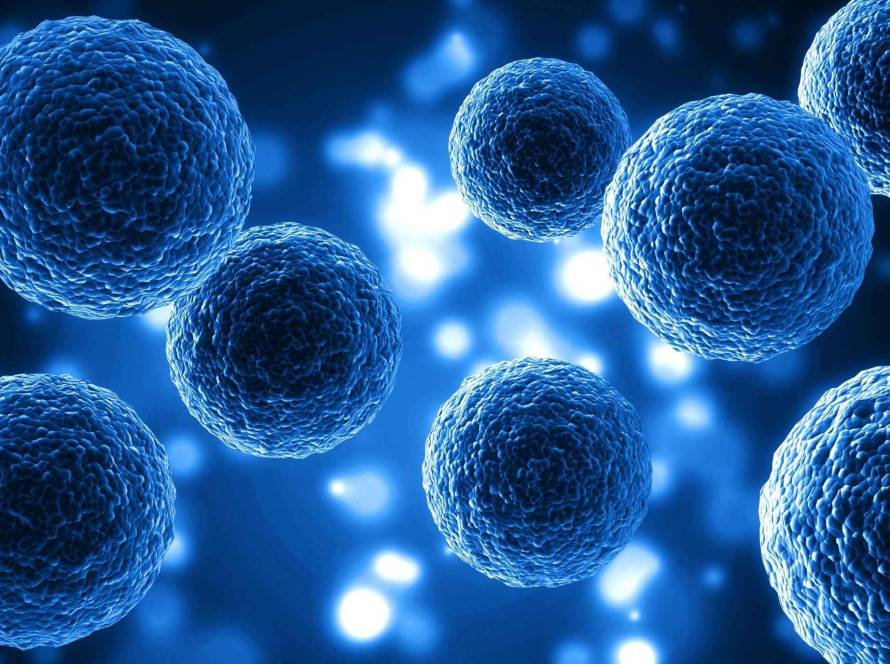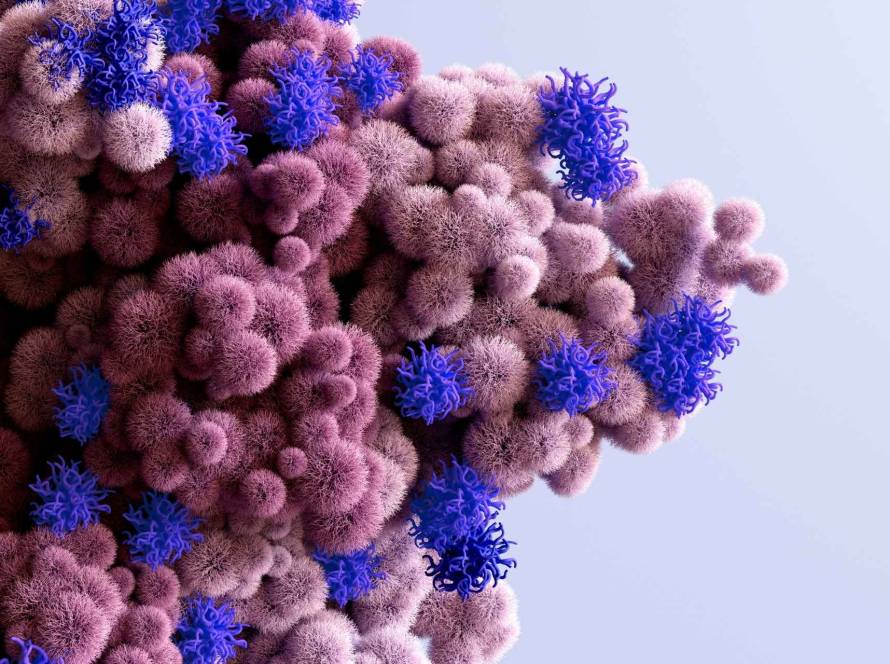Reducing senescent cells naturally could be our best defense against aging. These damaged cells stop growing permanently and build up in our bodies as we age. Our health can improve noticeably with just a small decrease in senescent cells and we might even live longer.
Let’s look at proven ways of how to reduce senescent cells through diet, exercise, supplements and new therapies. This piece brings together the latest scientific research and practical, applicable steps to help your body’s natural cell renewal process.
Understanding senescent cells and their impact on aging
Cellular senescence involves nondividing but metabolically active cells that play a key role in how we age. The process goes way beyond simple cell death, it’s a complex biological state that affects our health and longevity.
What are senescent cells and how do they form
Senescent cells permanently stop dividing but stay metabolically active. The cells can become senescent through several distinct pathways:
- Replicative senescence happens when telomeres get shorter after repeated cell divisions;
- Stress induced senescence comes from DNA damage, oxidative stress or oncogene activation;
- Mitochondrial dysfunction creates more reactive oxygen species (ROS);
- Epigenetic alterations change gene expression patterns.
Cells that experience these stressors trigger a DNA damage response that activates ATM and ATR kinases and starts a phosphorylation cascade that stops the cell cycle. The damaged cells don’t die through apoptosis (programmed cell death), they stick around in tissues and undergo dramatic changes.
How senescent cells contribute to age related diseases
Our bodies collect more senescent cells as we age. We make more of them and our immune system gets worse at clearing them out. This buildup leads to age related diseases in several ways.
Senescent cells create ongoing, low grade inflammation (inflammaging) by constantly secreting senescence associated secretory phenotype (SASP). This chronic inflammation throws off tissue balance and speeds up aging throughout the body.
Research shows that putting just a few senescent cells into young, healthy animals can cause age related physical problems. This supports the threshold idea, once a tissue has too many senescent cells, age related changes start happening.
These cells play a role in many diseases:
- Osteoarthritis and other joint disorders:
- Cardiovascular diseases including atherosclerosis;
- Neurodegenerative conditions like Alzheimer’s;
- Type 2 diabetes and metabolic disorders;
- Pulmonary fibrosis and other lung diseases;
- Cancer progression and recurrence.
Senescent cells also make it harder for tissues to heal by disrupting stem cell environments and wearing them out through SASP factors. Their proteases break down extracellular matrix, which reduces tissue tension and elasticity.
Scientists proved senescent cells cause aging by removing them from mice, this made the mice live longer and stay healthier. These findings have gotten researchers excited about developing senotherapeutic treatments to target these cells and improve human health and longevity.
Dietary strategies to reduce senescent cells naturally
Your food choices can make a big difference in how your cells age. Scientists are learning how certain foods and eating patterns help your body remove aging cells and slow down the aging process naturally.
Fasting and caloric restriction benefits
Scientists consider calorie restriction (CR) the most powerful non genetic way to extend lifespan in many species. CR works in several ways. It blocks the mTOR pathway, a key growth regulator that can stop cells from cleaning themselves when too active. CR also kicks starts autophagy, your bodys natural recycling system that cleans out damaged cell parts. This cleanup helps prevent aging cells from building up.
Studies show that cutting calories by 30-40% reduces aging markers and inflammation in heart, kidney and colon tissues by a lot.
Time restricted eating works just as well. These patterns help your body switch from using sugar to burning fat and making ketones. This triggers protective responses in your cells without constant food restriction. Our body turns on genes that repair DNA, clean mitochondria and defend against oxidative stress during fasting, all vital steps to prevent cell aging.
Senolytic foods that target cellular aging
Some foods naturally contain compounds that can find and remove aging cells. These “senolytic” foods help your body clear out old cells.
Berries lead the pack of senolytic foods. Strawberries stand out because they contain fisetin, one of natures strongest senolytics. Mouse studies show fisetin increased lifespan and improved age related problems. Human trials started after these impressive animal results.
Here are other powerful senolytic compounds:
- Quercetin: apples, onions and broccoli have plenty of this compound. It works with fisetin to boost cell clearing effects;
- EGCG: green teas active ingredient reduces inflammation from aging cells and slows aging in long term research;
- Curcumin: turmerics main compound improves tissue health and helps fight inflammation and aging cells;
- Apigenin: this flavonoid in chamomile tea fights inflammation and cell damage;
- Oleuropein: olive oil and leaves contain this compound that reduces inflammation and fights cell aging by promoting cleanup.
Many plant compounds like resveratrol (from grapes and red wine), kaempferol and pterostilbene help fight cell aging in various lab tests.
Anti-inflammatory eating patterns
Ongoing inflammation speeds up the buildup of aging cells. An anti-inflammatory diet helps curb cellular aging.
Mediterranean diet leads the way in fighting inflammation. Research shows it lowers inflammatory markers like C-reactive protein (CRP) and interleukin-17. These diet work against cell aging through several key components:
- Omega 3 fatty acids from fish and flaxseeds work wonders against cell aging. People with more marine omega 3s live longer. These fats reduce harmful substances from aging cells and protect immune cell telomeres;
- Vitamins and minerals play big roles too. Vitamin D affects cell aging in labs and humans, with higher levels linked to longer telomeres. Vitamin E slows cell aging in blood vessel and skin cells. Low magnesium speeds up aging by increasing cell cycle blockers and shortening telomeres.
Exercise and lifestyle modifications for senescent cell clearance
Physical activity and lifestyle habits are powerful tools that can curb cellular senescence. Research shows these methods can substantially reduce senescent cell burden and improve overall health.
How different exercise types affect senescent cells
Physical activity has a direct effect on senescent cell buildup. Studies show that endurance exercise prevents age related increases in classical senescence markers p16 expression in middle aged and older adults colon mucosa. A study show that 12 week well laid out exercise program lowered key senescence markers in CD3+ T cells.
Different exercise types give unique benefits:
- Endurance training: a 5 month training program reduced p16 positive senescent cells in older womens thigh adipose tissue. Long term aerobic exercise prevents the rise of inflammatory cytokines like IL-6 and TNF-α that lead to senescence;
- Resistance exercise: this type increases leukocyte infiltration in skeletal muscles and may enhance senescent cell clearance. When combined with high protein intake, resistance training shows even better results in removing senescent cells.
Exercise intensity plays a crucial role. Moderate exercise benefits the body, but too much high intensity training can increase senescence markers in some tissues.
Sleep optimization for cellular regeneration
Sleep quality has profound effects on cellular aging. Research shows that disturbed sleep increases DNA damage. Poor sleep activates genes linked to senescence associated secretory phenotype.
Sleep helps cellular health in several ways:
- It supports optimal hormone secretion (especially growth hormone) that helps tissue regeneration;
- Creates the right environment for stem cell growth and differentiation;
- Helps cellular repair processes that reach their peak during deep sleep.
Women who report insomnia symptoms show more senescent T cells. Good sleep reduces oxidative stress, inflammation and telomeric attrition.
Stress management techniques that reduce cellular aging
Mental stress speeds up senescent cell buildup through oxidative damage and inflammation. Long term stress triggers a “cytokine storm” that increases reactive oxygen species production, damages DNA and promotes cellular senescence.
These stress management methods work well:
- Regular meditation reduces stress related inflammation;
- Deep breathing exercises control stress hormone levels;
- Fun hobbies promote relaxation.
These practices help maintain telomere length, which shortens with psychological stress and boost overall cellular health. Using these exercise and lifestyle changes with dietary strategies creates an all encompassing approach to reduce senescent cell burden.
Supplements and natural compounds with senolytic properties
Natural compounds that can clear out senescent cells have shown great promise as tools to reduce these problematic cells. Plant based substances give people more options to optimize their cellular health.
Quercetin and fisetin: plant flavonoids with senolytic effects
Quercetin and fisetin stand out among natural senolytics because of their proven effects. You can find these flavonoids in fruits and vegetables. They target and remove senescent cells without damaging healthy ones.
Quercetin exists abundantly in apples and onions. Scientists discovered that combining it with dasatinib creates better senolytic results. All the same, poor oral bioavailability and a short biological half life make clinical use challenging.
Strawberries contain fisetin, which might pack an even stronger punch. Studies show that fisetin as the most effective natural senolytic.
NAD+ boosters and their effect on cellular health
NAD+ levels drop by a lot as we age, which leads to cellular senescence. This happens in part because senescent cells just need lots of NAD+ for their metabolism.
Your body can boost NAD+ levels through several precursors:
- Nicotinamide riboside (NR);
- Nicotinamide mononucleotide (NMN);
- Nicotinic acid;
- Nicotinamide;
- Tryptophan.
Research shows that NR supplements help aging mices muscle function by improving mitochondrial performance and protecting muscle stem cells. Human studies reveal that nicotinamide riboside can increase skeletal muscle NAD+ metabolism and create anti-inflammatory effects.
Medical interventions and pharmaceutical approaches
Medical research on pharmaceutical treatments for senescent cells is moving faster than ever. Clinical trials are showing great results. These treatments are affordable if you have high senescent cell burden or age related conditions.
Senolytic drugs in clinical development
The first generation of senolytic drugs targets senescent cells by exploiting their resistance to apoptosis. These drugs work on senescence associated anti-apoptotic pathways (SCAPs) that senescent cells need to survive.
Here are the most studied senolytics in clinical development:
- Dasatinib + Quercetin (D+Q): this combination has shown great results in early human trials. A small trial with diabetic kidney disease patients showed D+Q reduced senescent cell burden in adipose tissue;
- Fisetin: this natural flavonoid has entered clinical trials with a good safety profile. It showed impressive results in preclinical models and increased median and maximum lifespan in mice;
- BCL-2 family inhibitors: navitoclax (ABT-263) targets the BCL-xL survival pathway. It prevents neurodegeneration and stops atherosclerotic plaque formation in animal models;
- UBX0101: this senolytic substantially reduced pain and senescence markers compared to placebo in a phase I trial for osteoarthritis. Doctors injected it directly into knee joints.
Senomorphics: suppressing the harmful effects of senescent cells
Senomorphics work differently from senolytics, they don’t kill senescent cells but suppress the harmful secretory phenotype (SASP). JAK inhibitors are promising senomorphics that reduce SASP cytokines like IL-6, MCP-1 and MCP-3 in senescent cells.
Rapamycin acts as a senomorphic agent by blocking the mTOR pathway. Clinical studies with mTOR inhibitors helped improve immune function and reduced upper respiratory infections in seniors.
Immune system enhancement therapies
Immunotherapy strategies to target senescent cells look especially promising. These methods make use of the immune systems natural ability to clear senescent cells, a function that declines with age (immunosenescence).
Scientists have made progress in developing chimeric antigen receptor (CAR) T cells that recognize senescent surfaceome proteins like urokinase type plasminogen activator receptor (uPAR). These engineered T cells eliminated senescent cells and extended survival in mouse models.
The best approach combines several core interventions. Regular fasting periods work alongside natural senolytics like fisetin and quercetin. Consistent exercise routines and proper stress management play vital roles too.
Small, environmentally responsible changes in your daily routine can affect your cellular health substantially over time. Dedicated use of these research backed approaches helps our bodies maintain healthy cell populations naturally. This leads to more graceful aging.


